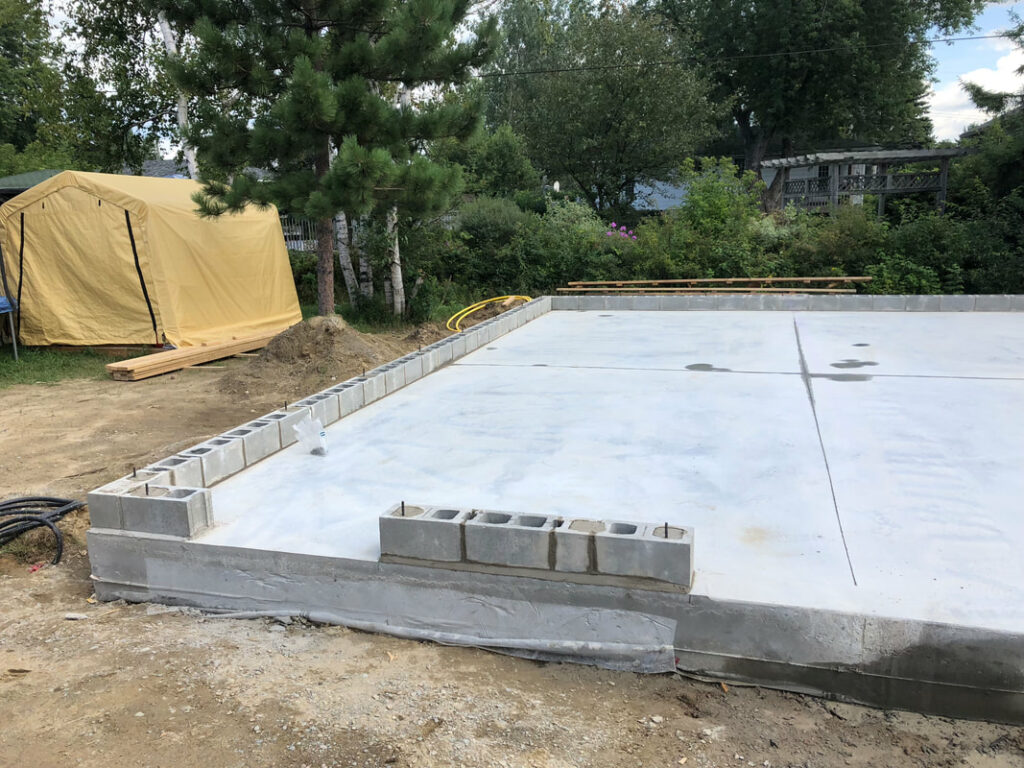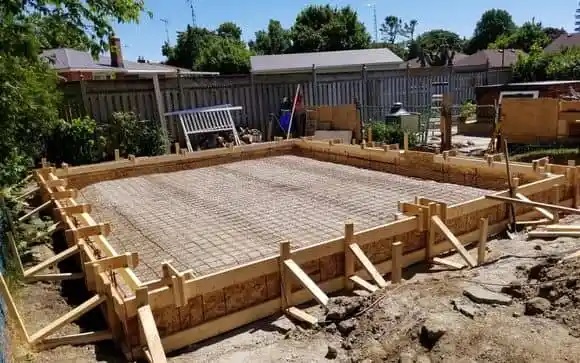Settlement of the foundation is one of the major problems that impact buildings and structures. Several factors cause settlement of the foundation such as low bearing capacity of the soil, poor compaction of soil etc. The stability of a structure is greatly affected by different types of settlement such as uniform settlement, tipping settlement and differential settlement. A Floating foundation is constructed to mainly address this by excavating the soil and earth strata. In a floating foundation, a deep excavation pit is constructed with a pile wall to support the edges of the slabs reinforcement mesh or matting is laid between some or all of these piles to create more stability.
In a floating foundation, the weight of a structure built on the soil is nearly equal to the total weight of the soil excavated from the ground before the construction of the structure. The main principle of a floating foundation is to balance the weight of removed soil with a structure of the same weight which causes zero settlement to the structure. It is used where a building on soil cannot take any additional load. In a typical floating foundation, the plumbing and electrical lines are fastened to the slab by simply running them through the floor as it is poured. This means that the plumbing, drainage, and electrical lines must all be completed before pouring the foundation.
Floating foundations are used for;
- Soils with good shear strength but have settlements problems under heavy loads
- Soils with low shear strength and there is no hard layer of soil at a reasonable depth
- Compressible soils
- Soils that do not contain any hard or stiff layer at a required depth

Advantages of floating foundation
- Advantageous in site areas with lower soil bearing capacity (SBC)
- Minimizes the foundation settlement
- Used in the high moisture soils
- Provides good stability to the structure.
- Can be used over loose soil or in soil with varying compressibility.
- Effective when we require a building extension without affecting the already existing foundation
- Requires less digging because deep footer trenches are not needed
- Helps to avoid seepage of water and frosting
Construction of floating foundation



Construction of Floating foundation
The floating foundations are constructed by using a method of concrete float. A concrete float is a tool used to finish a concrete surface by making it smooth. This tool is used after the surface has been made level using a screed. During the construction of the floating house foundation, excavation should be done with proper measures. Construction professionals involved in these projects can benefit from specialized training programs, such as OSHA Outreach Training, to ensure they are well-versed in safety protocols and standards, contributing to a secure and compliant construction process.Factors and methods for the construction of the floating foundation are mentioned below;
The method for foundation settlement are as followed;
- Site Preparation- the site is first inspected. Trenches and dirt are removed from the site. Then excavation is prepared.
- Site Excavation For Floating Foundation- clear the land and excavate the area as per the plan. This is the initial preparation for the construction.
- Laying Gravel Base for Drainage- making the drainage in the sides and bottom of the foundation, for the water to drain out through the gravel base.
- Reinforcement Of Floating Foundation- molds are placed for the casting procedure.
- The casting of Floating Slab- concrete is poured into the formwork
- Curing- should be cured for seven days. Water is sprinkled for curing.
Factors to consider for the construction of a floating foundation:
- Excavation- excavated part should be supported using piles
- Dewatering – the water table level must be checked before the excavation
- Critical depth- limit to the depth of excavation must be double checked
- Bottom heave- determine the methods to minimize the formation of heave
Conclusion
Floating foundations are preferred because they can accommodate changes in water levels that may take place due to erosion and fluctuating water tables. If your building is in an area with wet soils, particularly clay and high groundwater pressures, floating foundations would be an appropriate choice. It depends upon soil bearing capacity and soil type.
Analysis of floating foundation
Floating foundations are used for
Advantages of floating foundation
Construction of floating foundation
The method for foundation settlement are as followed
Factors to consider for the construction of a floating foundation

